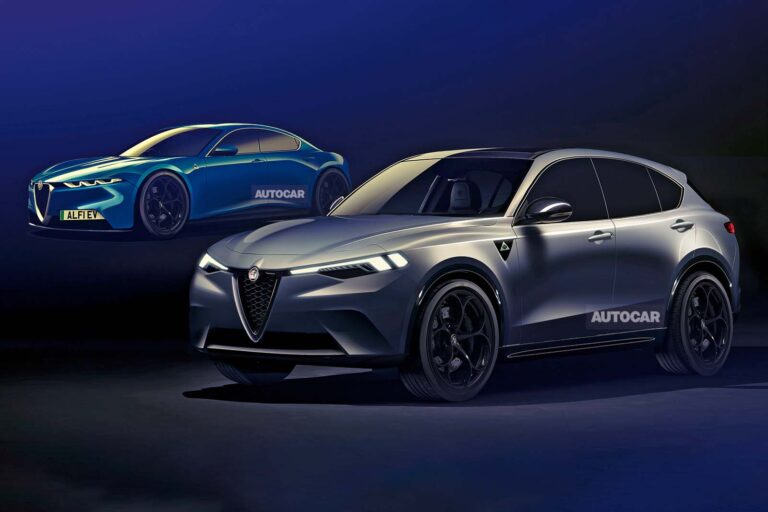Alfa said this would enable greater flexibility of dynamic character, with customisation possible on the fly using artificial intelligence. The cars will also be updated over the air throughout their lifetimes, with periodical software updates for further refinement.
Inside, each car will remain firmly focused on the driver, with Alfa CEO Jean-Phillipe Imparato having committed to a conservative approach to the cars’ digital offerings.
Speaking to Autocar in July 2023, he said: “I respect what Mercedes is doing with its digital technology, of course, but my customers aren’t looking for metre-wide infotainment screens in their cars or 200 digital assistance systems to switch on and off.”
Imparato added that the cars will both retain the signature ‘cannocchiale’ (telescope) instrument binnacle while gaining a larger infotainment display.
The head-up display may also provide assistance to the driver, such as projecting a ‘ghost’ car ahead to help them to pick the right line through a tricky bend.
“This feels like something an Alfa should do,” said Imparato, adding: “It’s helping you to drive the car and keeping you engaged in the process. What I don’t need is to know is the weather for three weeks’ time. I don’t care – I’m here to drive.”
Both the Stelvio and Giulia will be built at the Cassino plant alongside one or more Maserati models, also based on STLA Large.


